接口请求监控:
前端为什么需要监控接口?
- 目前大都是采用前后端分离的开发模式,接口成为了前端和后端进行通信的桥梁。因此接口的稳定性往往也决定这整个系统的稳定性。
- 鉴于不同浏览器对请求的处理机制可能不同,前端监控更能准确定位出现的问题。
监控什么以及如何监控
目标
- 监控所有的接口请求
- 记录请求的返回结果和状态
- 定位问题产生的原因以及分析接口的性能
请求分类
- 前端常见的发送请求的方式有:ajax、、axios库、Fetch等。虽然他们各自的实现方式略有不同,但都是对
XMLHttpRequest对象进行的封装或用Fetch请求。 - 对于浏览器来说,所有的接口均是基于XHR和Fetch实现的,为了捕获接口中的错误,可以通过重写该方法,然后通过接口返回的信息来判断当前接口的状况。
监听的字段
示例:
{
"title": "前端监控系统", //标题
"url": "http://localhost:8080/", //url
"timestamp": "1590817024490", //timestamp
"userAgent": "Chrome", //浏览器版本
"kind": "stability", // 大类型:稳定性
"type": "xhr", // 具体类型
"eventType": "load", //事件类型
"pathname": "/success", //路径
"status": "200-OK", //状态码
"duration": "7", //持续时间
"response": "{\"id\":1}", //响应内容
"params": "" //参数
}
监听ajax请求

具体实现:
sdk:
/*
* 监听接口请求
*/
// 接口上报(这里用的是发送ajax的方法,接入阿里云SLS)
import tracker from "../utils/tracker";
export function injectXHR() {
let XMLHttpRequest = window.XMLHttpRequest
// 缓存原始的open方法
let oldOpen = XMLHttpRequest.prototype.open
// 重写open方法
XMLHttpRequest.prototype.open = function (method, url, async) {
// 上报到到阿里云的请求和webpack的请求不用处理
if (!url.match(/logstores/) && !url.match(/sockjs/)) {
// 给XMLHttpRequest实例身上增加logData属性
this.logData = { method, url, async }
}
return oldOpen.apply(this, arguments)
}
// 缓存原始的send方法
let oldSend = XMLHttpRequest.prototype.send
// 重写send方法
XMLHttpRequest.prototype.send = function (body) {
console.log('logData', this.logData);
// logData 说明拦截到了
if (this.logData) {
let startTime = Date.now()//记录开始时间
let handler = (type) => (event) => {
let duration = Date.now() - startTime // 持续时间
let status = this.status // 状态码
let statusText = this.statusText // 状态文本
tracker.send({
kind: 'stability',
type: 'xhr',
eventType: type, // load error absort
pathName: this.logData.url,
status: status + '-' + statusText,
duration, // 持续时间
response: this.response ? JSON.stringify(this.response) : '', // 响应体
params: body || '' //
})
}
this.addEventListener('load', handler('load'), false)
this.addEventListener('error', handler('error'), false)
this.addEventListener('abort', handler('abort'), false)
}
return oldSend.apply(this, arguments)
}
}
配置webpack devServer模拟请求:
// 配置开发服务器
devServer: {
contentBase: path.resolve(__dirname, 'dist'),// devServer静态文件根目录
// before 是用来配置路由的
// 内置了express
before(router) {
router.get('/success', function (req, res) {
res.json({ id: 1 }) //200
})
router.post('/error', function (req, res) {
res.sendStatus(500) //500
})
}
},
测试Demo:
<!DOCTYPE html>
<html lang="en">
<head>
<meta charset="UTF-8">
<meta http-equiv="X-UA-Compatible" content="IE=edge">
<meta name="viewport" content="width=device-width, initial-scale=1.0">
<title>前端监控</title>
</head>
<body>
<div id="container">
<div class="content">
<input type="button" id="successAjaxBtn" value="ajax成功请求" onclick="sendSuccessAjax()">
<input type="button" id="errorAjaxBtn" value="ajax失败请求" onclick="sendErrorAjax()">
</div>
</div>
<script>
function sendSuccessAjax() {
let xhr = new XMLHttpRequest
xhr.open('GET', '/success', true)
xhr.responseType = 'json'
xhr.onload = function () {
console.log(xhr.response);
}
xhr.send()
}
function sendErrorAjax() {
let xhr = new XMLHttpRequest
xhr.open('POST', '/error', true)
xhr.responseType = 'json'
xhr.onload = function () {
console.log(xhr.response);
}
xhr.onerror = function (error) {
console.log(error);
}
xhr.send('name=xiaoming')
}
</script>
</body>
</html>
模拟ajax成功请求:
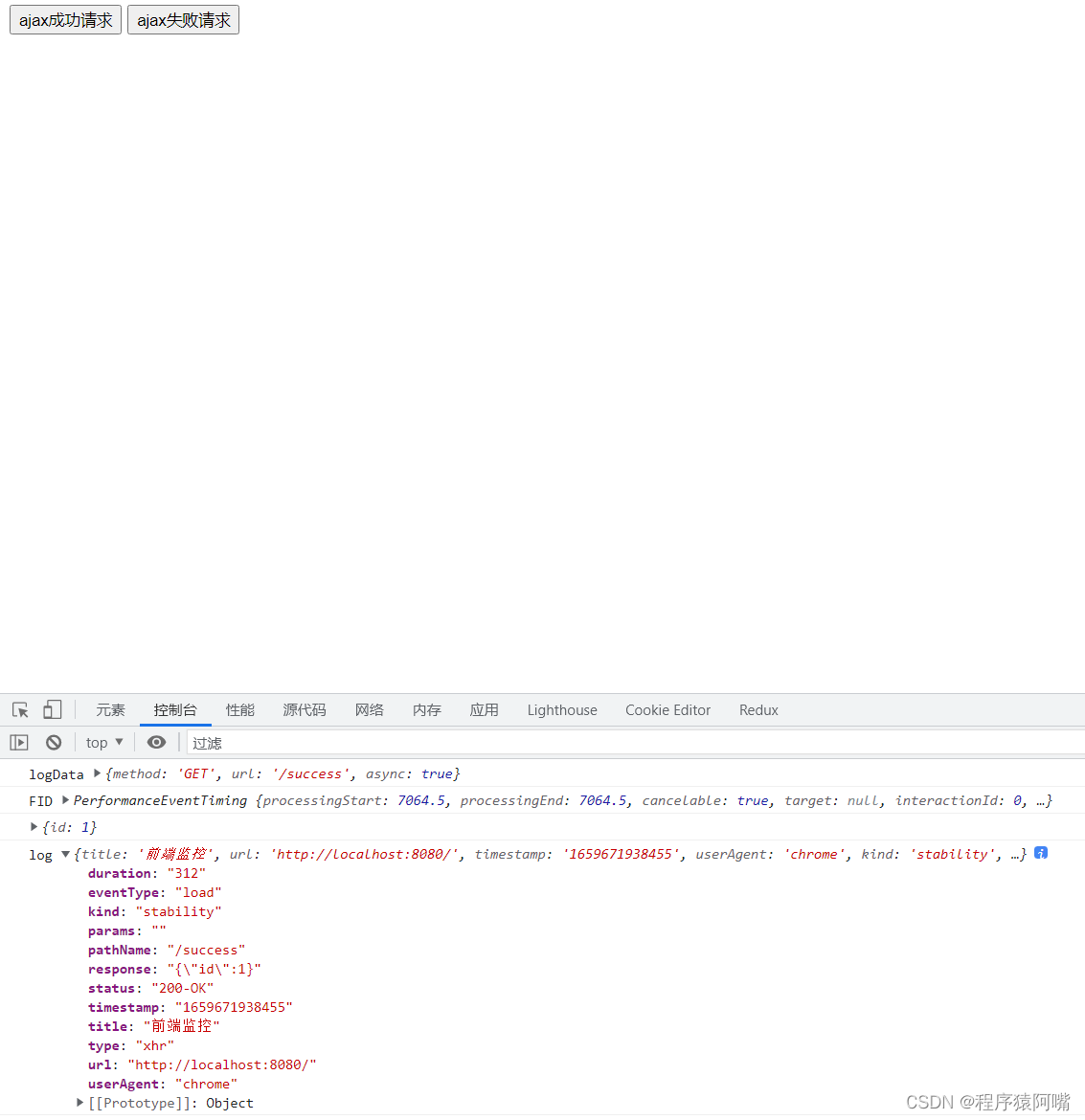
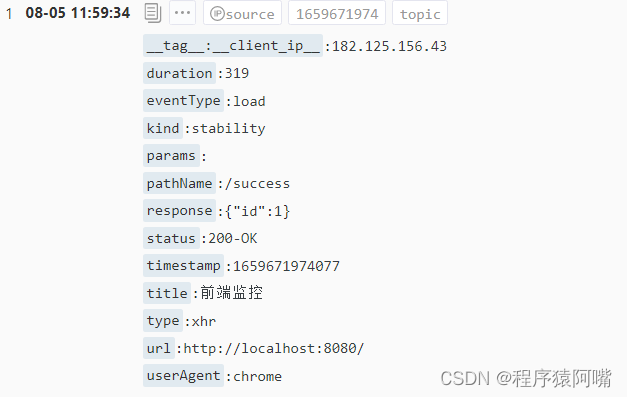
模拟ajax失败请求:
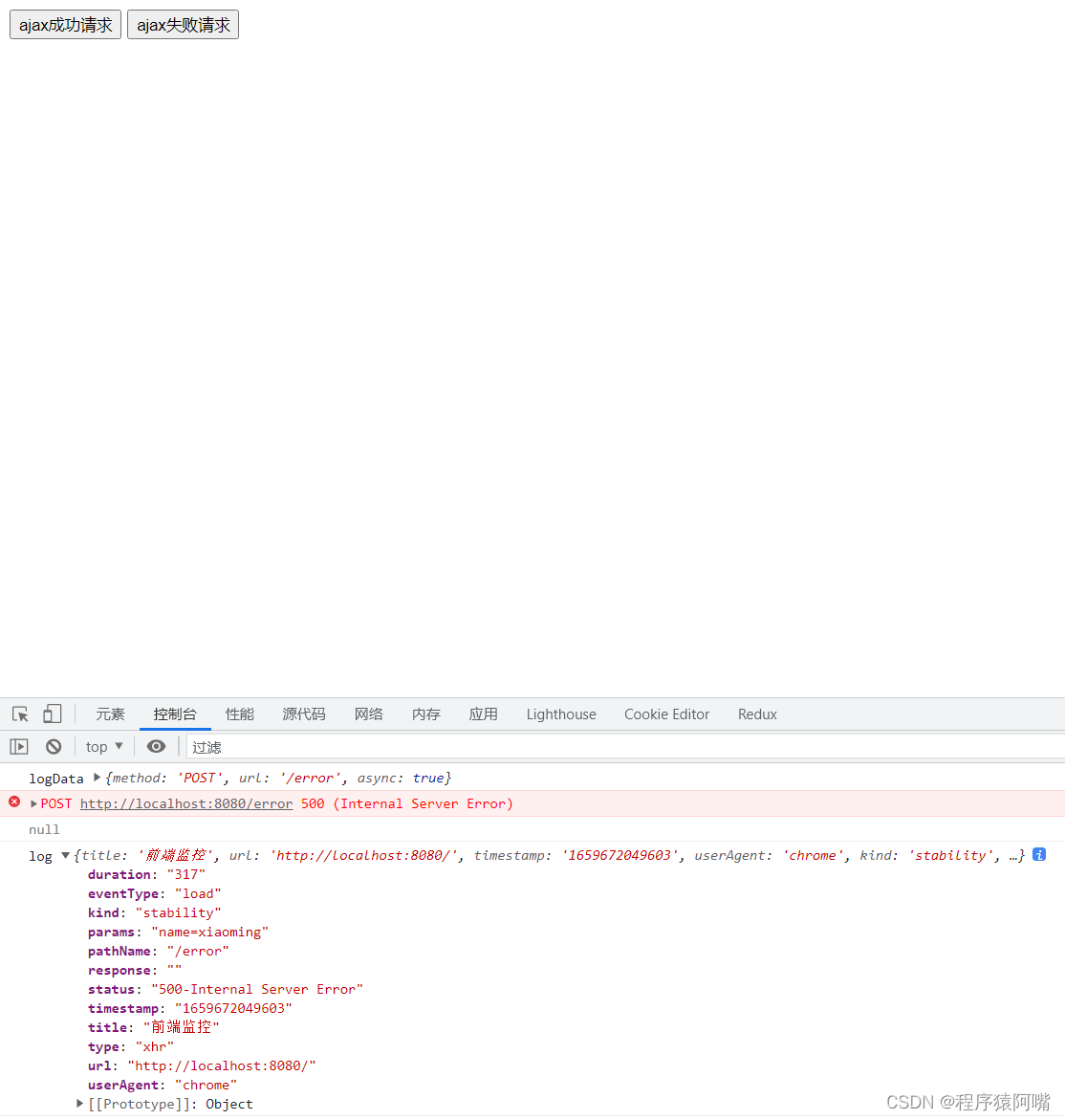
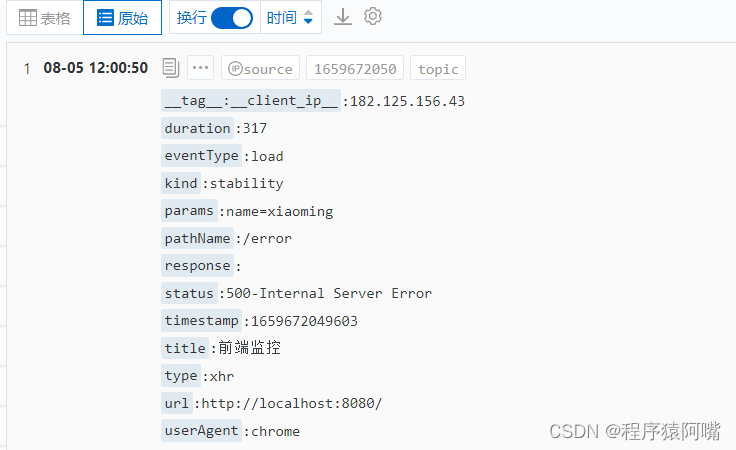
监听fetch请求
fetch请求和ajax有所不同,MDN中对fetch的一些描述:
当接收到一个代表错误的 HTTP 状态码时,从 fetch() 返回的 Promise 不会被标记为 reject,即使响应的 HTTP 状态码是 404 或 500。相反,它会将 Promise 状态标记为 resolve(如果响应的 HTTP 状态码不在 200 - 299 的范围内,则设置 resolve 返回值的 ok 属性为 false),仅当网络故障时或请求被阻止时,才会标记为 reject。
因此,对于fetch,我们可以根据返回数据的ok字段来判断请求是否成功,如果为 true 则请求成功,否则失败。
监听思路:
也是重写fetch方法,在.then和.catch中进行数据上报。
具体实现:
sdk:
// 监听fetch请求
import tracker from "../utils/tracker";
const originalFetch = window.fetch
export function overwriteFetch() {
// 重写fetch方法
window.fetch = function newFetch(url, config) {
let method;
let params;
if (config) {
method = config.method.toUpperCase() || 'get'
params = config.body || ''
} else {
method = 'get'
params = ''
}
const startTime = Date.now()
const reportData = {
kind: 'stability',
type: 'fetch',
startTime,
url,
method,
params,
}
return originalFetch(url, config)
.then(res => {
reportData.endTime = Date.now()
reportData.duration = reportData.endTime - reportData.startTime
const data = res.clone()
reportData.status = data.status
reportData.success = String(data.ok)
console.log(reportData)
//数据上报
tracker.send({
kind: reportData.kind,
type: reportData.type,
startTime: reportData.startTime,
duration: reportData.duration,
url: reportData.url,
method: reportData.method,
params: reportData.params,
status: reportData.status,
success: reportData.success,
})
return res
})
.catch(err => {
reportData.endTime = Date.now()
reportData.duration = reportData.endTime - reportData.startTime
reportData.status = 0
reportData.success = 'false'
console.log(reportData)
//数据上报
tracker.send({
kind: reportData.kind,
type: reportData.type,
startTime: reportData.startTime,
duration: reportData.duration,
url: reportData.url,
method: reportData.method,
params: reportData.params,
status: reportData.status,
success: reportData.success,
})
throw err
})
}
}
测试demo:
<!DOCTYPE html>
<html lang="en">
<head>
<meta charset="UTF-8">
<meta http-equiv="X-UA-Compatible" content="IE=edge">
<meta name="viewport" content="width=device-width, initial-scale=1.0">
<title>前端监控</title>
<!-- 脚本加载错误 -->
<!-- <link rel="stylesheet" href="cssError.css"> -->
</head>
<body>
<div id="container">
<div class="content">
<input type="button" id="successFetchBtn" value="fetch成功请求" onclick="sendSuccessFetch()">
<input type="button" id="errorFetchBtn" value="fetch失败请求" onclick="sendErrorFetch()">
</div>
</div>
<script>
function sendSuccessFetch() {
fetch('/success').then(response => {
console.log(response);
response.json()
}).then(data => console.log('data', data))
}
async function sendErrorFetch() {
// fetch('/error').then(response => response.json()).then(data => console.log('data', data))
// 发送post请求
const response = await fetch('/error', {
method: 'POST',
body: JSON.stringify({ name: 'xiaoMi' })
})
console.log(response);
return response.json().then(data => console.log(data))
}
</script>
</body>
</html>
测试成功fetch请求:

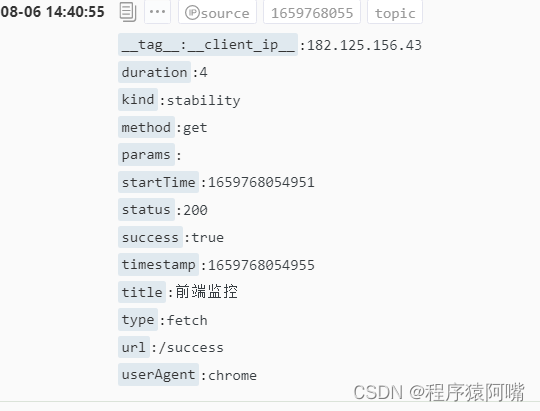
测试失败的fetch请求:

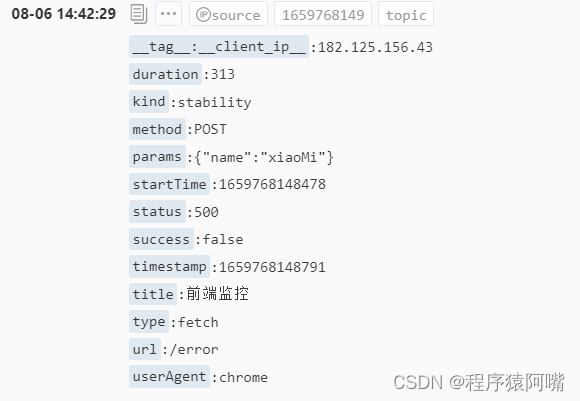
参考链接:
https://developer.mozilla.org/zh-CN/docs/Web/Guide/AJAX
https://www.ruanyifeng.com/blog/2020/12/fetch-tutorial.html
https://zhuanlan.zhihu.com/p/89089088
https://www.zhihu.com/question/335786718

























 1100
1100











 被折叠的 条评论
为什么被折叠?
被折叠的 条评论
为什么被折叠?








